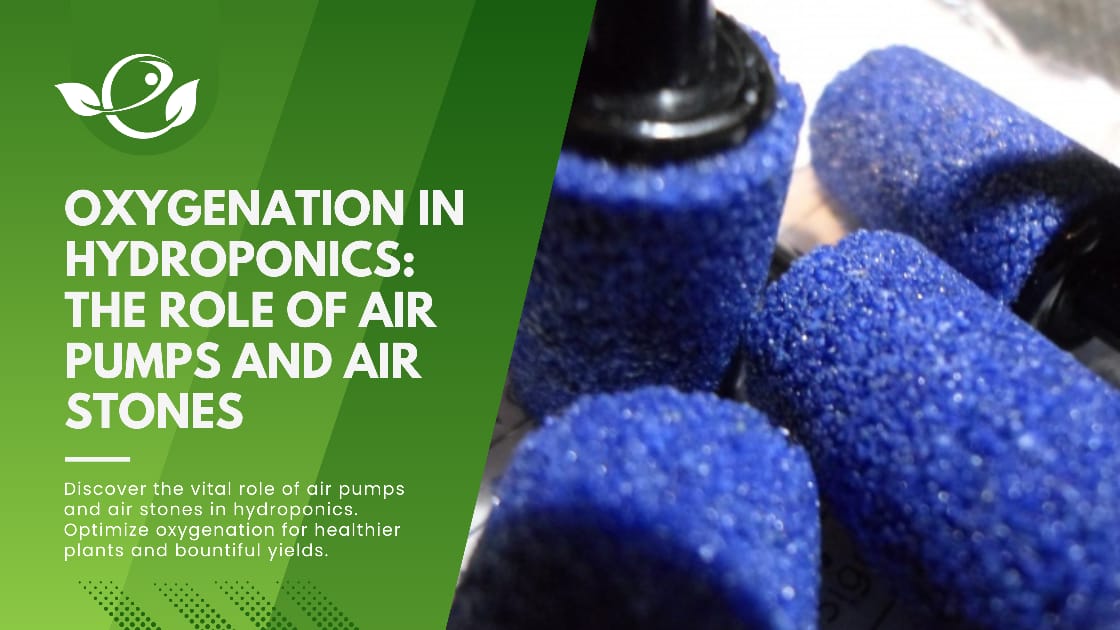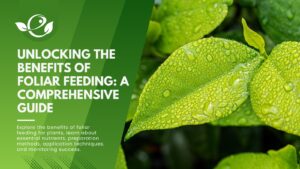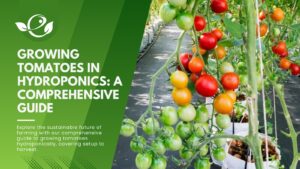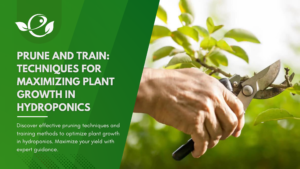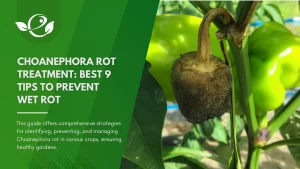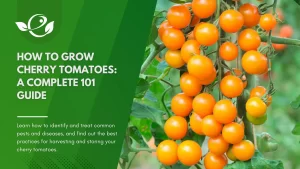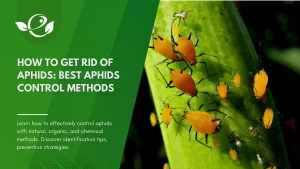Table of Contents
Hydroponics, a soilless method of cultivating plants, has gained popularity due to its efficiency and ability to grow crops in limited spaces. In this blog, we will explore the crucial role of proper aeration in hydroponic systems, specifically focusing on the significance of air pumps and air stones. By the end of this article, readers will have a comprehensive understanding of how oxygenation impacts hydroponics and why air pumps and air stones are essential components in these setups.
Understanding Hydroponics and Oxygenation
Definition of Hydroponics and Its Benefits
Hydroponics is a method of growing plants without soil, where the roots are submerged in a nutrient-rich water solution. This technique offers several advantages, including:
- Efficient nutrient uptake: With direct access to nutrients, plants can absorb them more efficiently, leading to faster growth and higher yields.
- Water conservation: Hydroponic systems use significantly less water compared to traditional soil-based cultivation.
- Space utilization: Hydroponics allows for vertical farming and indoor gardening, making it suitable for urban environments with limited space.
- Reduced reliance on pesticides: In a controlled environment, pests and diseases are easier to manage, reducing the need for chemical interventions.
The Importance of Aeration in Hydroponic Systems
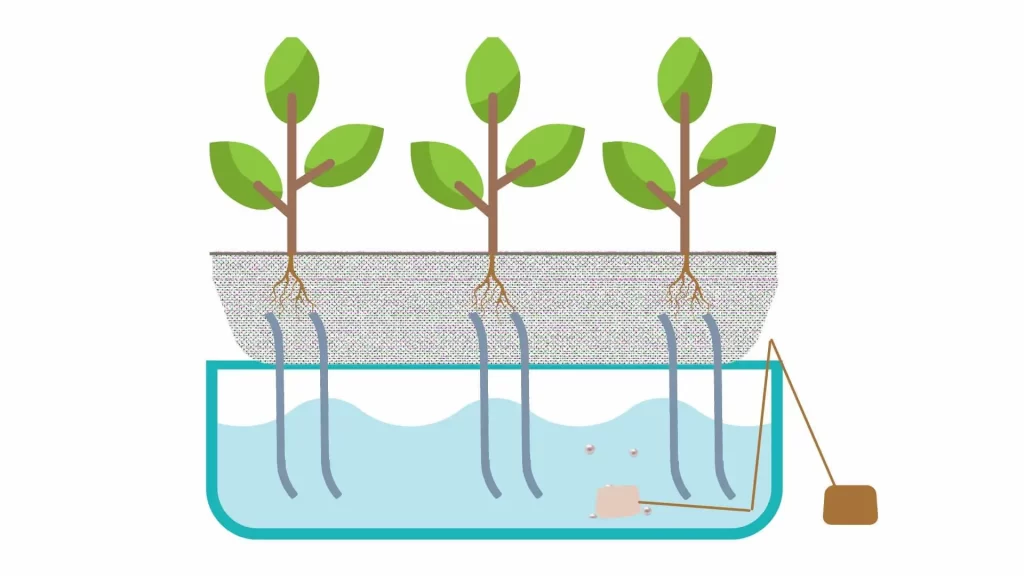
In hydroponics, oxygen plays a crucial role in sustaining plant health. Unlike in soil, where oxygen is readily available, the root systems in hydroponic systems are submerged in water, which can lead to oxygen deprivation. Proper aeration through air pumps and air stones ensures that the roots receive the oxygen they need to perform vital functions such as:
- Root respiration: Oxygen is essential for cellular respiration in plant roots, which generates energy and enables nutrient absorption.
- Nutrient absorption: Oxygen-rich environments facilitate the efficient uptake of nutrients, supporting robust growth and development.
How Oxygen Influences Nutrient Absorption in Plants
Oxygen is not only vital for the respiration of plant roots but also plays a role in nutrient uptake. When oxygen levels are optimal, it enhances the plant’s ability to absorb nutrients from the water solution. Optimal oxygen levels in the hydroponic solution enhance nutrient absorption in several ways:
- Oxygen increases root zone activity, creating a higher demand for nutrients, which leads to improved nutrient uptake.
- Oxygen helps create a healthier rhizosphere, promoting the growth of beneficial microorganisms that aid nutrient availability.
Improved nutrient absorption leads to healthier and more robust plant growth, which is essential for successful hydroponic gardening.
Introducing Air Pumps and Air Stones
What Are Air Pumps and How Do They Work?
Air pumps are mechanical devices that provide continuous aeration to the nutrient solution in hydroponic systems. They function through a simple mechanism:
- An electric motor drives a diaphragm, piston, or rotary vane, generating compressed air.
- The pressurized air is directed through tubing to the air stones.
The Role of Air Stones in Aeration
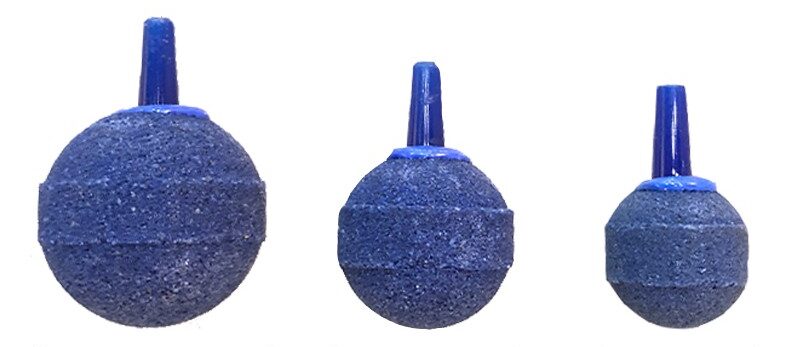
Air stones, also known as diffusers, play a critical role in the aeration process. They consist of porous stones or ceramic discs that disperse the pressurized air into tiny bubbles. The bubbles rise through the nutrient solution, oxygenating it and ensuring:
- Oxygen-rich zones around the roots: The bubbles create oxygen-rich pockets around the submerged roots, supporting respiration and nutrient uptake.
- Prevention of anaerobic conditions: Oxygenation inhibits the growth of anaerobic pathogens that can harm the roots.
Types of Air Pumps and Air Stones Commonly Used in Hydroponics
The selection of air pumps and air stones depends on system size and specific needs. Common types of air pumps include:
- Diaphragm pumps: Efficient and durable, suitable for medium to large hydroponic setups.
- Piston pumps: Ideal for smaller systems, reliable and easy to maintain.
- Rotary vane pumps: Powerful and suitable for larger, commercial-scale operations.
Likewise, various air stones are available:
- Standard air stones: Simple and affordable, suitable for most hydroponic setups.
- Disk air stones: Provide finer bubbles for increased oxygen transfer efficiency.
- Ball air stones: Efficient in deep water culture systems, where oxygen needs to reach lower root levels.
Benefits of Aeration in Hydroponics
Enhanced Nutrient Uptake by Plants
A well-aerated hydroponic system fosters improved nutrient absorption:
- Faster nutrient delivery: Oxygen-rich conditions enable nutrients to move swiftly from the solution to the roots.
- Increased root surface area: Enhanced root growth and branching lead to a larger surface area for nutrient absorption.
Prevention of Root Diseases and Rot
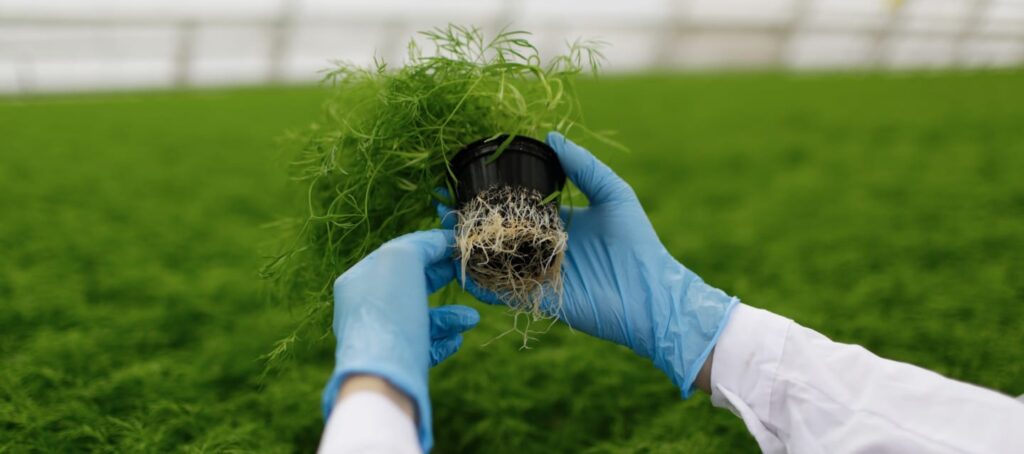
Aerated hydroponic systems contribute to healthier root systems and protect against root diseases and rot:
- Reduced susceptibility to pathogens: Oxygenation prevents the buildup of anaerobic microbes that can harm root health.
- Improved oxygen flow: Roots receive a continuous supply of oxygen, preventing suffocation and root decay.
Improved Growth Rates and Overall Plant Health
Aerated hydroponic setups promote robust plant growth and vitality:
- Faster metabolism: Increased oxygen supports essential metabolic processes, resulting in accelerated growth.
- Vigorous root development: Healthy roots lead to stronger nutrient absorption and overall plant health.
Oxygenation Techniques in Different Hydroponic Systems
Deep Water Culture (DWC)
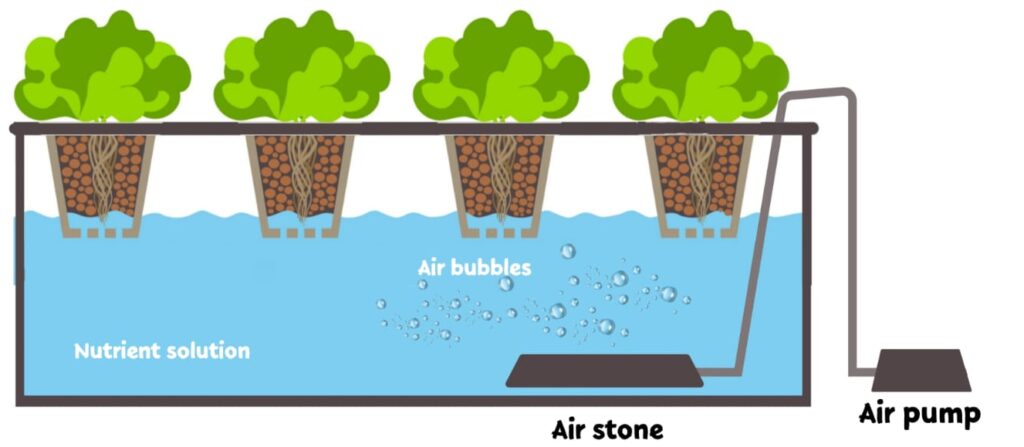
DWC is a popular hydroponic technique where plant roots are suspended in a nutrient solution, with an air stone providing continuous oxygenation.
Nutrient Film Technique (NFT)
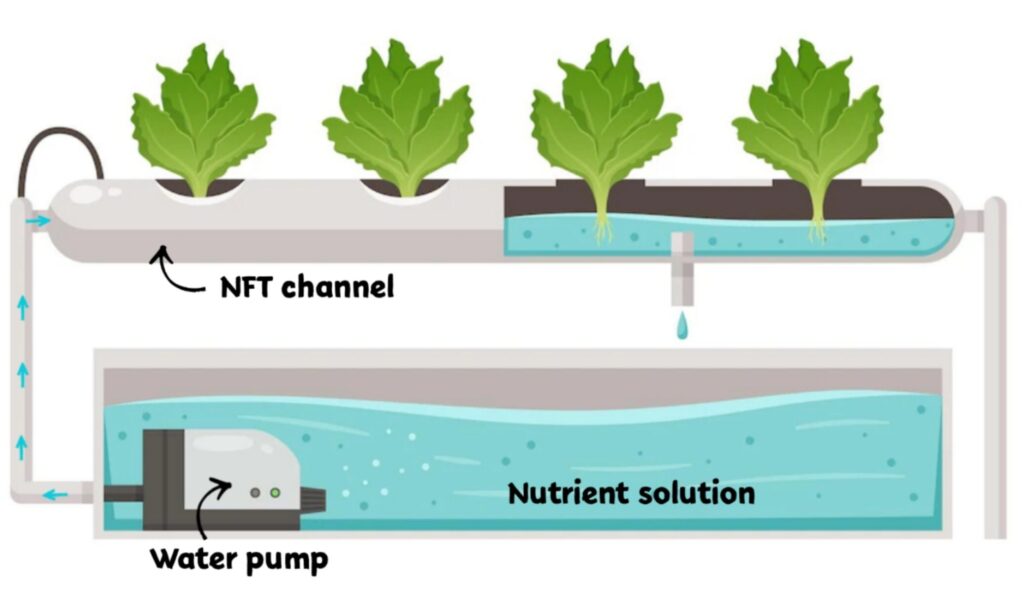
NFT systems use a thin film of nutrient solution flowing over the roots, with air pumps and air stones ensuring adequate dissolved oxygen level maintained in the solution.
Ebb and Flow (Flood and Drain)
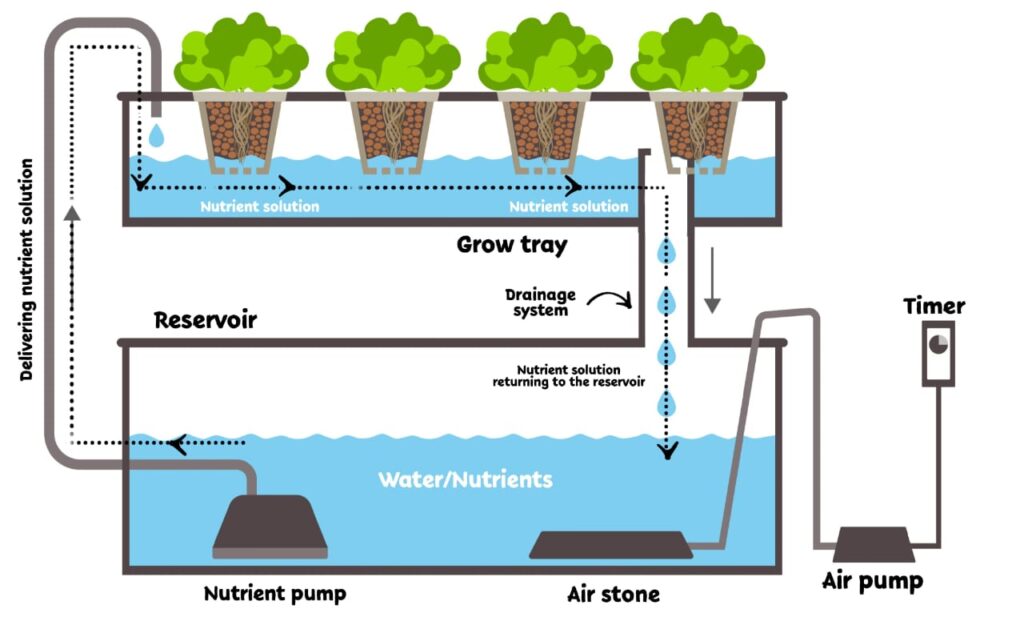
In Ebb and Flow systems, the nutrient solution periodically floods the root zone, and during the draining phase, oxygenation occurs naturally. Additionally, air pumps and air stones can be used to maintain the dissolved oxygen level in the solution.
Aeroponics
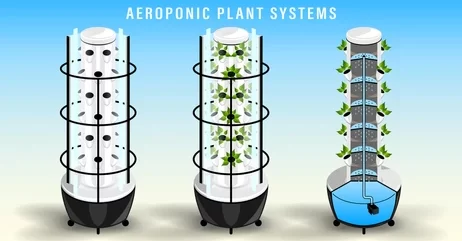
Aeroponics is a high-tech hydroponic method where plant roots are suspended in the air, and oxygenation is achieved by misting nutrient solution.
Wick System

The wick system is a passive hydroponic technique that relies on a wick to draw nutrient solution to the roots, with limited aeration capabilities.
Factors Influencing Air Pump and Air Stone Selection
System Size and Water Volume
The size of the hydroponic system and the volume of water being aerated directly impact the air pump and air stone selection:
- Larger systems with higher water volumes require more powerful air pumps to ensure adequate oxygenation throughout the setup.
- Smaller systems can use less powerful air pumps without compromising efficiency.
Pump Capacity and Output
Selecting the appropriate air pump capacity is crucial for maintaining optimal oxygen levels:
- Calculate the required litres per minute (LPM) or gallons per hour (GPH) based on the system’s size and the number of air stones used.
- Ensure the chosen air pump can deliver sufficient air pressure to operate the air stones effectively.
Noise Considerations
In certain settings, noise from air pumps can be a concern. Opt for quiet air pumps or those with noise-reducing features, especially for indoor or residential setups.
Energy Efficiency
Opting for energy-efficient air pumps can help reduce operational costs and minimize the environmental impact of hydroponic gardening. Look for pumps with low power consumption and high-efficiency ratings.
Installing and Maintaining Air Pumps and Air Stones
Proper Placement of Air Stones in Hydroponic Setups
The strategic placement of air stones ensures even oxygen distribution:
- Position air stones near the plant roots to create oxygen-rich zones around them.
- Use multiple air stones for large systems to maintain consistent aeration.
Steps to Set Up an Air Pump System
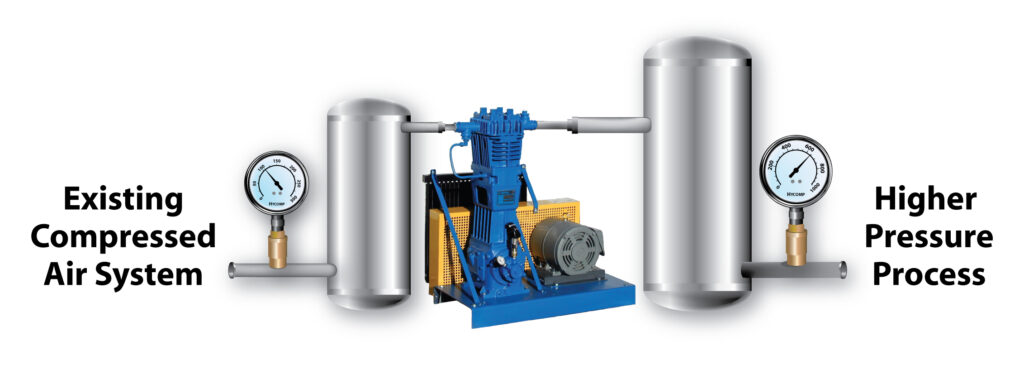
Installing an air pump system involves straightforward procedures:
- Choose a suitable location for the air pump, ensuring it is stable and well-ventilated.
- Connect the air pump to the air stones using flexible tubing.
- Place the air stones in the nutrient solution, ensuring they remain submerged.
Routine Maintenance and Troubleshooting Tips
Regular maintenance enhances the longevity and performance of air pumps and air stones:
- Clean air stones regularly to prevent clogging and ensure efficient oxygenation.
- Check tubing and connections for leaks and replace damaged components promptly.
Alternative Aeration Techniques
Venturi Systems
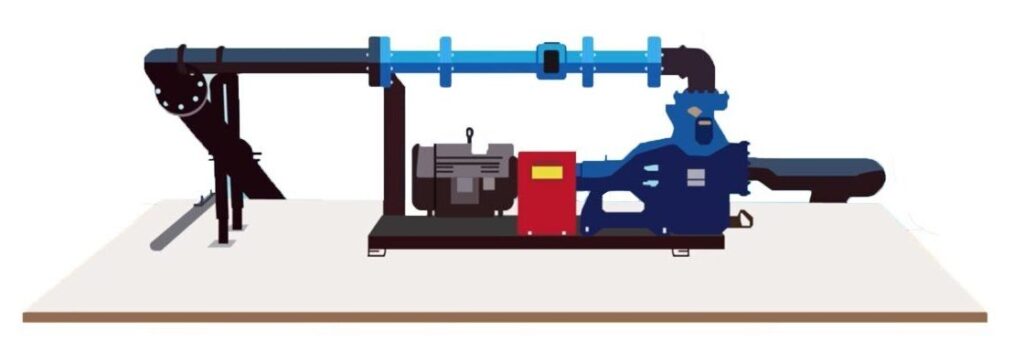
Venturi systems use the flow of water to draw in air for aeration:
- Suitable for systems where adding an air pump may not be practical.
- Install a venturi device in the water line to create a vacuum and infuse air into the nutrient solution.
Waterfalls and Cascades
Water features can serve as natural aeration methods:
- Create cascading waterfalls in the hydroponic system to facilitate oxygen exchange.
- Water movement helps aerate the nutrient solution without the need for additional equipment.
Air-Lift Systems
Air-lift systems utilize compressed air to create bubbles that lift nutrient-rich water:
- The rising bubbles lift the water to the upper part of the system, promoting aeration.
- Commonly used in large-scale hydroponic setups.
Best Practices for Optimizing Aeration
Monitoring Dissolved Oxygen Levels
Regularly measure dissolved oxygen levels in the nutrient solution:
- Use an oxygen meter or test kit to gauge oxygen concentration.
- Adjust aeration settings to maintain optimal oxygen levels based on the plant’s needs.
Balancing Aeration and Water Temperature
Water temperature affects oxygen solubility:
- Monitor water temperature and adjust aeration to ensure dissolved oxygen remains at suitable levels.
- Cool water if necessary to increase oxygen availability.
Integrating Aeration with Nutrient Dosing Schedules
Coordinating aeration with nutrient dosing schedules can optimize nutrient absorption and promote healthier plant growth.
Addressing Common Aeration Challenges
Overaeration and Its Effects on Plants
Avoid over aeration, which can harm plants:
- Excessive oxygen levels may lead to oxygen toxicity, negatively impacting root health.
- Observe plants for signs of stress caused by over aeration and adjust accordingly.
Dealing with Clogged Air Stones
Frequent cleaning prevents air stone clogs:
- Remove air stones regularly for cleaning and soak them in a mild vinegar solution to dissolve deposits.
- Replace air stones that are damaged beyond cleaning.
Preventing Cross-Contamination and Spread of Pathogens
Maintain a clean and hygienic hydroponic system:
- Disinfect equipment regularly to prevent the spread of pathogens among plants.
- Use sterile nutrient solutions and growing mediums to minimize contamination risks.
DIY Air Pump and Air Stone Solutions
Creating Homemade Air Pumps and Air Stones
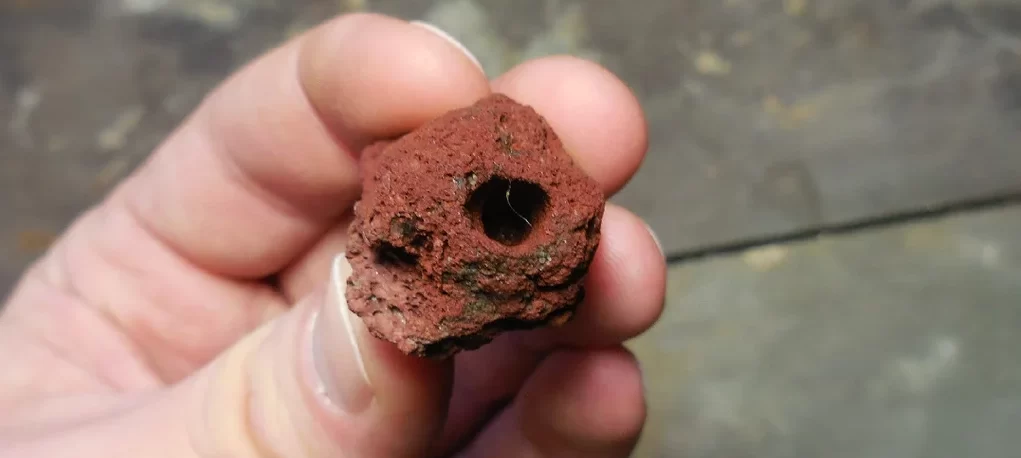
For resourceful gardeners, DIY solutions can be cost-effective and practical:
- Construct simple air pumps using aquarium pumps or repurposed materials.
- Craft air stones from porous materials like ceramic, wood, or even plastic bottles.
Safety Considerations and Limitations
Be mindful of safety precautions when creating DIY systems:
- Ensure electrical components are well-insulated and away from water to avoid accidents.
- Understand the limitations of homemade setups, as they may not match the performance of commercial-grade equipment.
Conclusion
In conclusion, aeration plays a pivotal role in the success of hydroponic gardening. The proper oxygenation of the nutrient solution through air pumps and air stones is essential for healthy plant growth, enhanced nutrient uptake, and disease prevention. As you venture into the world of hydroponics, ensure that your system incorporates efficient aeration techniques to maximize your crop yield and enjoy the satisfaction of nurturing thriving plants in a soilless environment.
Frequently Asked Questions (FAQs)
1. Is it necessary to use air pumps and air stones in all hydroponic systems?
While air pumps and air stones are commonly used in many hydroponic systems to ensure adequate oxygenation, not all setups require them. Some hydroponic techniques, like the Kratky method, use passive systems that do not rely on air pumps for aeration. However, most hydroponic systems benefit from the use of air pumps and air stones, especially in larger and more complex setups.
2. How do I know if my hydroponic system lacks oxygen?
Signs of insufficient oxygen in a hydroponic system may include:
Slow or stunted plant growth.
Wilting or yellowing leaves.
Poor nutrient uptake leads to nutrient deficiencies.
Foul odour from the water, indicating anaerobic conditions.
If you observe any of these symptoms, it’s essential to assess the aeration in your hydroponic system and consider using air pumps and air stones if needed.
3. Can I use different types of air stones in the same hydroponic setup?
Yes, you can use different types of air stones in the same hydroponic setup. Combining various air stones can create diverse bubble sizes, increasing oxygen distribution throughout the nutrient solution. However, ensure that the air pump’s capacity can supply enough air to operate all the air stones efficiently.
4. Are there any natural methods of oxygenating hydroponic systems?
Yes, some natural methods can help oxygenate hydroponic systems. These include:
Aquatic plants: Introducing floating aquatic plants in the system can release oxygen through photosynthesis.
Water agitation: Gentle water movement caused by slight stirring or waterfalls can promote oxygen exchange.
However, while these methods provide some oxygenation, they may not be sufficient for larger or more complex hydroponic setups, where air pumps and air stones are generally more effective.
5. Can I aerate the hydroponic system without using electricity?
Yes, you can aerate a hydroponic system without electricity by using alternative aeration methods, such as venturi systems or waterfalls, as discussed in the article. Additionally, some DIY setups use hand-operated pumps or bellows to introduce air into the nutrient solution, providing aeration without electricity.
6. How often should I clean the air stones?
The frequency of cleaning air stones depends on the quality of your water source and the presence of mineral deposits or organic matter. In most cases, it is recommended to clean air stones every two to four weeks to maintain their efficiency. However, if you notice reduced air output or clogging, clean them more frequently.
7. Can I use fish tank air stones for hydroponics?
Yes, fish tank air stones can be used in hydroponics. Many fish tank air stones are suitable for hydroponic applications and can be easily connected to hydroponic air pumps using standard-sized tubing. However, ensure the air stones are clean and free from any residues or contaminants that might affect plant health.
8. How do I troubleshoot low oxygen levels in my hydroponic system?
If you suspect low oxygen levels in your hydroponic system, you can take the following steps:
Check the air pump and tubing for blockages or leaks that might reduce air supply.
Verify that the air stones are clean and functioning correctly.
Increase aeration time or consider adding more air stones for better oxygen distribution.
Monitor dissolved oxygen levels using a testing kit and adjust aeration accordingly.
If the issue persists, seek advice from experienced hydroponic gardeners or professionals to identify and address the specific problem.
